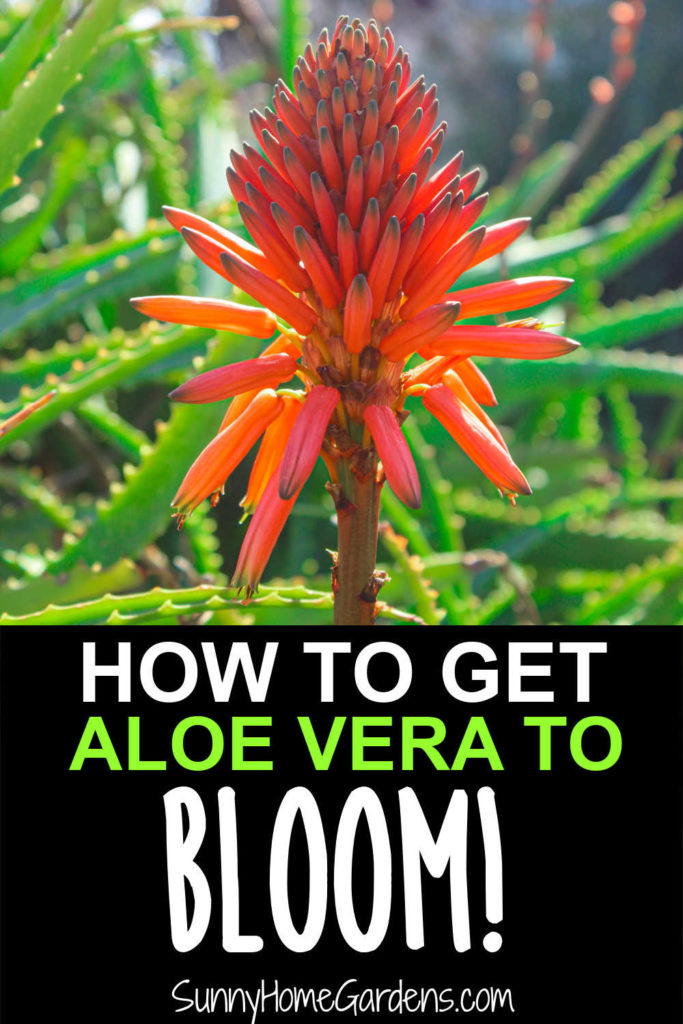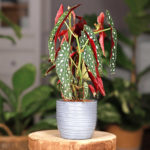If you are wondering do aloe plants bloom? The answer is they do. Find out all of our tips and tricks to getting this hardy succulent to flower in your home.
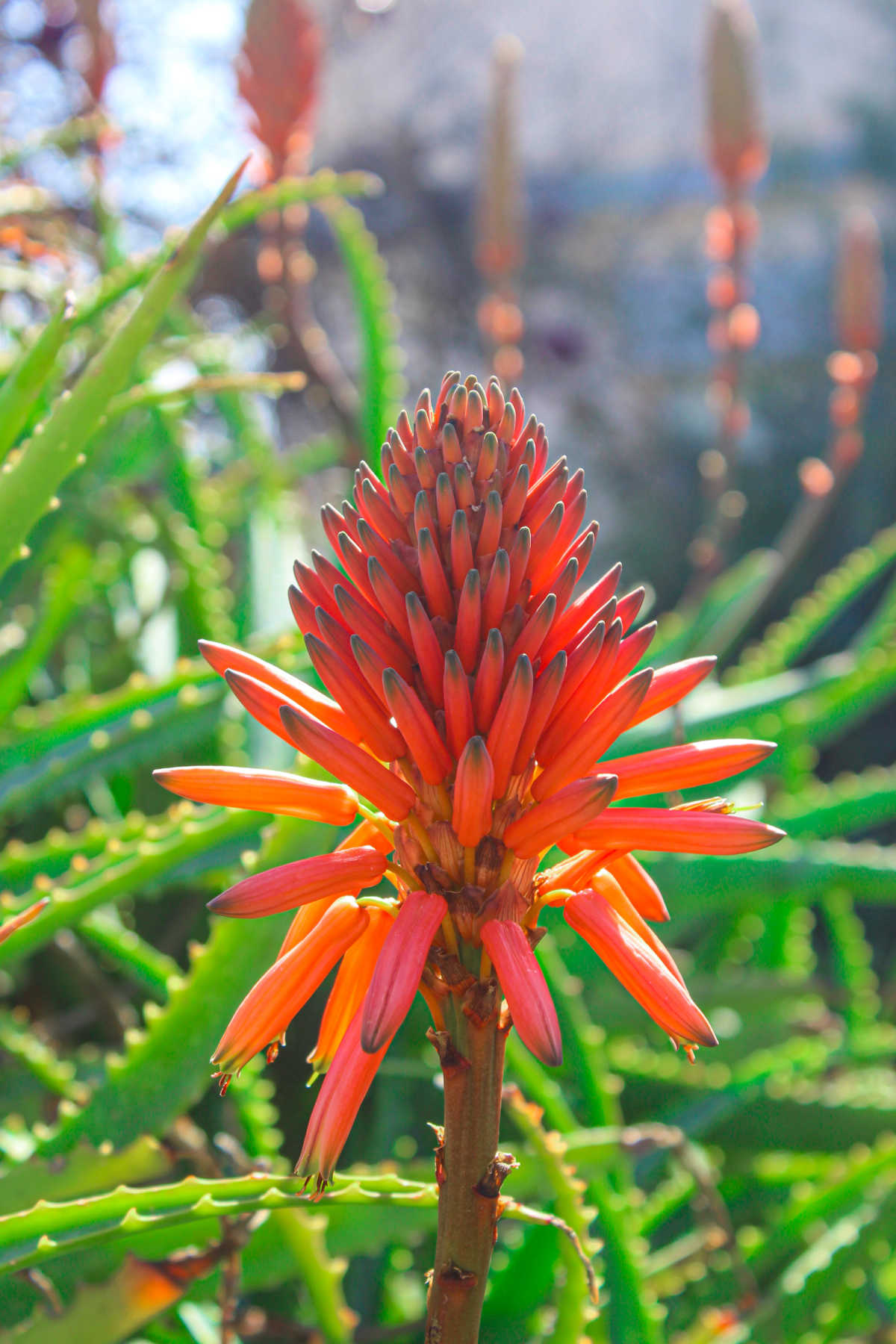
Aloe vera is one of the more popular indoor plants that many people grow.
While the fleshy leaves of the aloe vera plant have long been used for topical or culinary purposes, there is another part of this special plant that often goes overlooked: the flower.
Aloe vera flowers can be overlooked because blooming this succulent plant can be tricky. Read on for this helpful guide to inducing blooms on your aloe plant.
Table of Contents
About the Aloe Vera Flower
Aloe flowers are quite unique.
Mature aloe vera plants grow an elongated flower spike, called an inflorescence. Out of these flower spikes, dozens of tubular flowers grow.
Aloe vera blooms in a range of colors from yellow, red, or orange flowers.
These flowers are usually 1 to 3 inches in length and bloom during the early spring & winter
Is it Difficult to Get an indoor Aloe Vera Plant to Flower?
It is certainly very tricky trying to get your aloe plant blooms, especially when your aloe is grown indoors year-round.
However, you can encourage flowering in your aloe vera plant, as long as you’re up for the challenge.
Reasons Why Your Aloe Vera is Not Blooming
It can be frustrating when you desperately try to get your aloe vera plant to produce flowers and it simply won’t.
Luckily, there are some key reasons why your aloe vera will not bloom.
Let’s break them down:
- not enough sun exposure
- insufficient water levels
- lack of nutrients
- young plant, not old enough to flower
How to Get Your Aloe Plant to Bloom
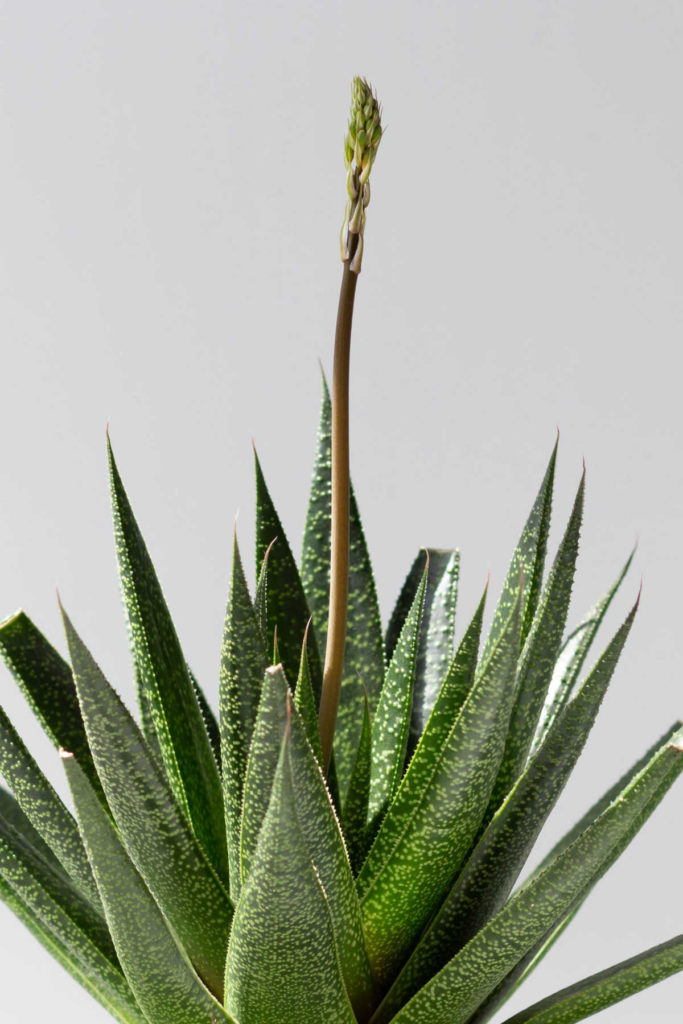
The real key to produce flowers is to try and replicate the aloe vera’s natural habitat as closely as possible.
Aloe plants are most likely to flower when their owners create the ideal environment to make their plant comfortable enough to bloom.
The four most important aspects of producing flowers boils down to lighting, watering, fertilizing, and plant maturity.
Let’s take a deeper look at each one.
Lighting
Aloe vera plants require as much sun exposure as possible.
Please keep in mind, the aloe vera plant is originally native to the Arabian Peninsula and is highly cultivated throughout the southwestern United States. Both of these areas have one thing in common: the sun shines bright and intensely.
During the spring and summer seasons, it is especially important to give your aloe vera plenty of light.
Bring your aloe vera plants outdoors to bask in the brightness; ideally summer temperatures should be at least 70° F. If nighttime temperatures dip below 60° F, make sure to bring your plant back into the home to keep warm.
Watering
Monitoring your aloe’s water levels is especially important when you’re trying to produce flowers in your aloe vera plants.
Aloe vera plants prefer drought conditions; their thick, succulent leaves allow them to withstand longer periods of time without being watered.
When watering your aloe plant, make sure to water them deeply, yet infrequently. Steadily pour water into the plant until you see excess draining out from the drainage holes at the bottom of the planter; this will ensure every inch of the root system has been adequately hydrated.
Or, you can bottom water instead. You can do this by sticking the pot your plant is in, into a larger container with a few inches of water. The soil will soak up the water. Once the soil is thoroughly soaked through, remove it from the container of water and let it drip out the excess.
The best rule of thumb is to wait until the top third of potting soil has dried up before you water your plant again.
This depends on evaporation levels, but your should expect to water your plant every 2 to 3 weeks during the spring & summer, and every 4 to 6 weeks during fall & winter.
Fertilizer
Adequate nutrients are extremely helpful in your desire to make your aloe plant bloom.
You may find benefits in giving your plant an extra boost of nutrients to force it to bloom.
It is highly important to fertilize your plant properly to avoid any negative effects. While fertilizer is a great way to get added nutrients into your plant, adding too much to your plant is possible.
Keep in mind that less is more with these plants.
During the spring & summer, apply a balanced houseplant fertilizer to your aloe plant that is diluted to half its strength. This fertilizer should only be applied once a month. Completely cease all fertilization during the fall & winter.
Plant Maturity
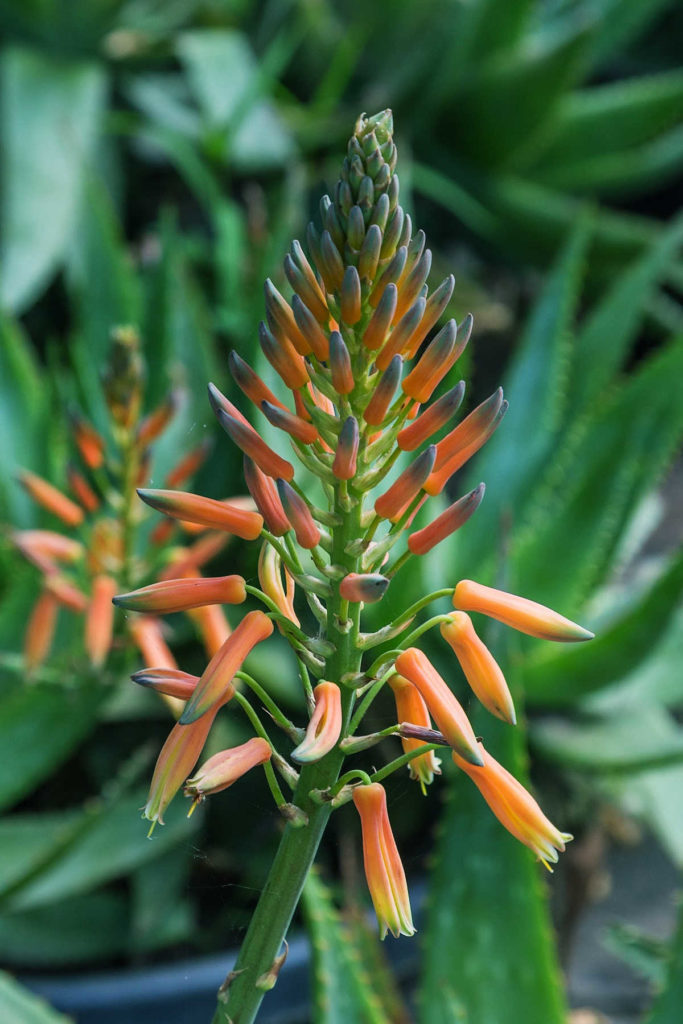
At the end of the day, the primary reason your aloe vera is not flowering could simply be the age of your plant.
Aloe vera plants will only start to bloom once they have reached their mature age. It is not uncommon for many aloe owners to have no idea the exact age of their plant.
Aloe vera is one of the most commonly cultivated and commercially sold succulent plants, so it is unsurprising if owners purchase these plants without knowing their age and proximity to maturity.
A small aloe vera pup can take anywhere from 3 to 4 years to reach full maturity.
After the plant has reached maturity, then blooming is possible. Unfortunately, the only real solution in this situation is time.
Allow your aloe vera a few years to reach its mature age before you attempt to induce blooming.
In the meantime, I highly suggest you keep up with plant maintenance, watering, sunlight, fertilizer, are all building blocks to a healthy, blooming aloe.
Final Thoughts on Getting Aloe Vera to Bloom
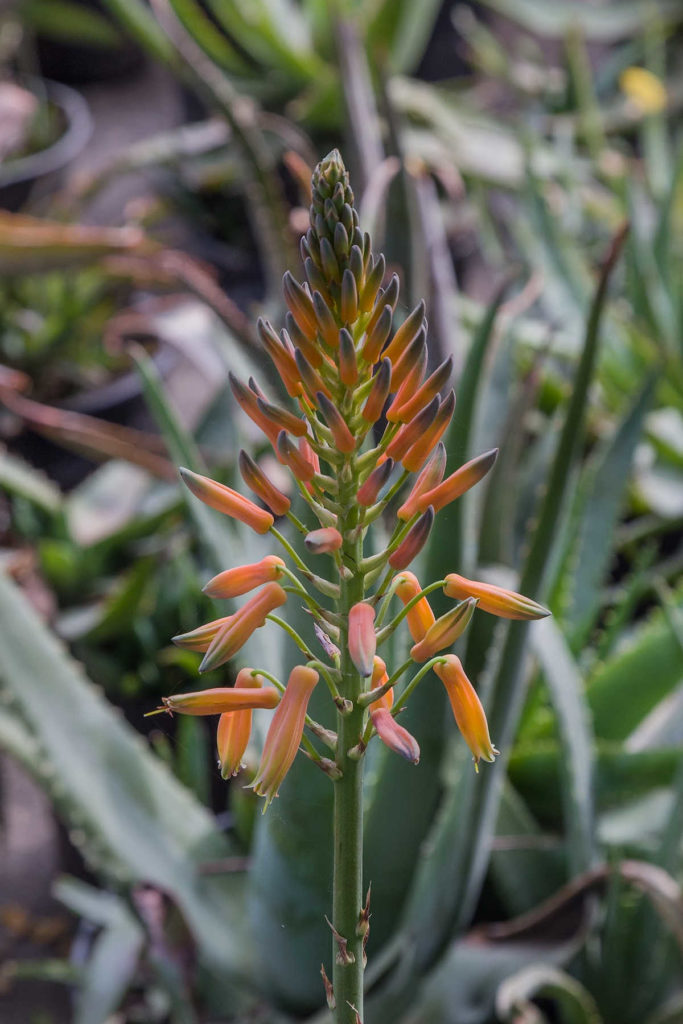
Unfortunately, sometimes indoor aloe plants do not flower.
Don’t fret, this is simply dependent on the aloe vera plant itself. Sometimes plants can be so finicky that they’ll only bloom in the outdoors.
It can be incredibly tedious and difficult to produce flowers on your aloe vera plants, but I implore you not to give up!
It is extremely satisfying when your hard work pays off and see a gorgeous flower spike to reward you for your efforts.
Getting flowers in your aloe plant is no small task, but I know with meticulous care you’ll be able to pull it off.


